I like perspective. Not just the kind used in photography, but the kind that changes the way we think about something. It’s very interesting sometimes, in that there are bare facts, and then there’s the way we feel about them, how we classify the information and relate to it. It comes up quite a bit in the spirited (read: vehement) discussions of free will which, whether it exists or not (it doesn’t,) still doesn’t change how our lives operate. A curious place for it to spring up, however, is in regards to Pluto.
This is perhaps the most contentious astronomical subject, at least to the general public, and a lot of it has to do with how we phrase things. As most people know, Pluto was one of the nine planets almost from the moment it was discovered, up until 2006, when its nomenclature was changed to dwarf planet. Invariably, this is referred to as being ‘demoted,’ and the qualifying term dwarf probably also contributes. A lot of people resent this change, even refusing to accept it, and get surprisingly emotional about it.
First off, there is no such thing as demoting a planet, since there is no status or prestige a planet can hold anyway, except in our own eyes. Pluto remains unchanged, and quite likely (barring a lot of our physics knowledge being dramatically overturned) completely unaware of its title, or indeed anything at all – it’s a frozen rock, and was long before we apes started jumping around and worrying about HBO series. The reason the classification was changed was to help distinguish various bodies found in our solar system. We make up all of these terms, including ‘planet,’ just to communicate, and any changes are intended to facilitate this (though perhaps not successful in this endeavor.) Yet they remain just abstract ideas in our heads.
Let’s go ahead and get dwarf planet out of the way. It’s defined by a solar system object a) orbiting the star, and not another body like a planet, b) large enough to shape itself through its own gravity, and c) incapable of clearing its orbit of any debris. That last bit is the clincher, since Pluto sits in the Kuiper Belt with a lot of other, smaller bits of rock and ice, while the eight major planets have gathered up the majority of loose matter and absorbed it. Another dwarf planet, Ceres, sits within the asteroid belt between Mars and Jupiter, while most of the others are out there in Kuiper territory with Pluto, some even beyond that.
We have millions of bits of stuff in our system. The asteroid belt contains lots of rocky bodies with highly irregular shapes, lacking enough mass to pull themselves into a sphere, the most gravitationally stable of shapes. Many satellites (‘moons’) of the planets are large enough to have done this, but of course orbit their planets and not the sun, thus that distinction – this is notable, since a lot of them, including Earth’s moon, are larger than Pluto.
One of the potential new classifications, back in 2006, was that a planet must be substantially larger than its moons, which would also have ruled out Pluto. Every moon exerts its own gravitational influence on the host it orbits, tugging it around in proportion to its mass, causing a wobble in the host’s orbital path around the sun. Pluto’s largest moon Charon is large enough that they pretty much orbit each other; the common center of gravity between them lies outside of Pluto’s diameter, so it doesn’t just wobble, it circles, like two skaters spinning with joined hands.
Now for fun, let’s look at some other qualifications that we could use:
A planet should be able to support an atmosphere. Pluto would make it, Mercury would not.
A planet must have a moon. Pluto wins out again over Mercury, and Venus as well. It has, in fact, five moons, so it ranks well above Earth (one moon) and Mars (two minuscule moons) in that respect as well.
A planet should have an axial tilt relative to the orbital plane. In other words, it should spin ‘upright’ in relation to its path around the sun. This depends on how sloppy you want to get, since none fit this bill, but Mercury is closest with 2°, Venus and Jupiter close behind with 3°; the rest, including Pluto, are tilted significantly, Uranus being totally screwed. And Venus rotates the opposite direction from all the rest.
A planet should be a rocky body. As opposed to being gaseous like Jupiter, Saturn, Uranus, and Neptune.
We could go on, but basically, one can create any sort of criteria one wants and pin this label on anything at all. Pluto is unique in a lot of ways, and can be appreciated for those. It is probably far older than the Earth, if you count being in a solid shape or stable orbit; Earth’s moon was likely formed by a collision with another Mars-sized object early on, and both had to restabilize. Earth may only exist, at least where it is now, because of the gravitational influence of Jupiter, which both prevented it from being drawn closer to the sun and helped clear away other bodies that would have caused catastrophic impacts. Pluto may also harbor the oldest molecules in the solar system, or very close; it is too far out for heat from the sun to cause many effects in its atmosphere, and too small to produce gravitational pressure that would catalyze any elements it possesses, which cannot be said for any of the major planets, and a few of the dwarves.
And what this is demonstrating is that all of the bodies in our system are unique. We can apply any labels to them as desired, when we think broad classifications are useful, but this in no way makes anything either unremarkable, or part of a prestigious group. In a way, this starts to sound like the misguided validation trend of the ’90s, where every child was special, but this doesn’t exactly apply; humans have a desire for recognition and improvement, and moreover very good reasons for pursuing these, so thwarting them by lowering the bar denies their usefulness. In contrast, all of the bodies in our system have something they can teach us, and no benefit to be accrued from either improvement (whatever arbitrary definition one uses) or change of any kind. Worry about the label only when the label has some application.
But this brings us to New Horizons. New Horizons is a probe currently on its way to visit Pluto, having begun its journey in January of 2006. On December 6th of this year, it will awaken from hibernation for the last time to begin its primary mission, while in January it will start actively collecting data about Pluto and its various moons. On July 14th of 2015, it will make its closest pass of Pluto before it trundles on towards even further reaches.
This might seem odd, but it’s a flyby mission, unlike many others that we know of, such as Cassini and the Mars Global Surveyor. As mentioned in an earlier post, it took quite a bit of maneuvering to get New Horizons on a path to intercept Pluto in the first place, because it’s so damn far out there; it used Jupiter’s gravity as a slingshot boost to be able to reach Pluto without relying on rocket thrust. Basic premise: thrust requires fuel, which is mass/weight. Mass/weight requires fuel to move. The more fuel you boost into space, the more fuel is needed just for the fuel’s own mass. The goal is to need as little fuel as possible so the mass being boosted is something more productive, like instrumentation.
Now, to reach Pluto in the nine years it’s currently taking, New Horizons has to be booking right along; presently it’s clocking 52,704 kph (32,749 mph) in relation to the sun, mostly ‘straight out.’ So in order for it to orbit, it would not only have to turn, it would also have to slow down to orbital velocity, somewhere below Pluto’s escape velocity of 4,320 kph. That’s a lot of fuel, that it would have had to carry the entire way. Long story short: it doesn’t, and is only going to whiz past Pluto and further into the Kuiper Belt, but not before gathering as much info as possible.
Which should be significant, since nearly all of the information we have has been gathered from Earth’s immediate vicinity. There have certainly been probes that have been much farther from Earth than, say, the Hubble Space Telescope, but that doesn’t mean that they were any closer to Pluto. We tend to think in terms of the concentric circles of the orbital plots that we always see illustrated, lining up the planets (and dwarf planets and non-planets) nicely, but they all orbit; while Cassini is hanging out at Saturn, this still might be on the other side of the sun from Pluto, even farther away than Earth. The New Horizons mission had some pretty crucial timing, in that using Jupiter for velocity assistance required Earth, Jupiter, and Pluto to reach appropriate positions in their orbits, something that wasn’t going to happen again for 300 years.
So most of what we know has been obtained from a great distance – always at least 4.28 billion kilometers (2.66 billion miles,) which is the point where Earth’s and Pluto’s positions come closest together. Hubble has been responsible for the best looks of Pluto to date, which haven’t been all that detailed.

Source: Hubblesite.org
That’s it; that’s all the detail we have. Are those blobs clouds? Craters? The missing Martian canals? A Monolith stockpile? We don’t know yet. You’ve seen some of the detail that Hubble is capable of, so this illustrates just how small and distant Pluto is, but if that’s not enough, how about an animation of Pluto and Charon, taken by New Horizons in August of this year?

Also note, as explained on the page that the image links to, that both Pluto and Charon are wobbling. This is not from bad camera aiming, but because the image is pinned on the common gravitational center of the two, the barycenter. Discussing this illustrates the difficulty and relativity of orbital mechanics. If you’re on Pluto, it would seem rock-steady and Charon would be orbiting, but the same in reverse would be seen from Charon, just as we sit here on Earth orbiting the sun and think the sun ‘rises’ and ‘sets.’ But if you took Pluto’s time and distance to orbit the sun to obtain an average orbital speed, that’s the barycenter, and Pluto advances and retreats routinely around this due to Charon’s gravitational influence.
Another interesting note is that New Horizons’ mission is still being planned, with the Hubble Space Telescope still scouting targets of potential interest after the probe passes Pluto. Part of this is because the timing of the probe’s launch was crucial; part of this is because there’s a huge demand on Hubble’s time, from astronomers all over the world – anyone can apply to use the scope, but they have to petition for it and make their case for how important their research is (so you’re welcome to try, but don’t hold your breath.) As yet, while there are some potential targets in range of New Horizons‘ path and limited fuel, to the best of my knowledge nothing has been confirmed yet. Suffice to say that the folks at Jet Propulsion Laboratory, the ones that control New Horizons, don’t consider the mission over once the probe passes out of effective range of Pluto, even though the flyby is the only confirmed mission; everything else will be gravy.
So keep watching the astronomy news. In a few months, New Horizons will be pumping out images and information about this little dwarf and its moons, providing a hell of a lot more information than we’ve been able to determine since its discovery in 1930. Meanwhile, you can go to the mission site for details and what we’ve accumulated so far.
Now for a little bonus. The change of Pluto’s status wrecked the mnemonic that untold people recited to recall the order of the planets in their distance from the sun, such as “Mother very eagerly makes jelly sandwiches using no peanutbutter,” or, “Mary’s violet eyes make Johnny stand up now period” (a ridiculous number of them use “very” in a stunning lack of originality.) It’s easy enough to change them to leave off the final P, but what about all of the other dwarf planets? Shouldn’t we be reciting them too?
And so, I took it upon myself to create one that includes them all: “Missing velvet earmuffs mean cold January storms unleash numbing pain on helpless quaking men’s red ears since breakfast.”
Got that?
It’s simple: Mercury, Venus, Earth, Mars, Ceres, Jupiter, Saturn, Uranus, Neptune, Pluto, Orcus, Hauma, Quaoar, Makemake, 2007 OR10, Eris, Sedna, 2012 VP113.
Now, I know you’re questioning a couple of them, but bear with me. 2007 OR10 was originally nicknamed “Snow White” due to its supposed albedo, the reflectance it possessed; later on, it was determined to be red in color instead, and the original Snow White stories (before Disney) sometimes featured her sister, Rose Red – I am not making this up – so this was the obvious choice. And 2012 VP113 is occasionally nicknamed “Veep” or “Biden,” so I went with the latter, mostly because ending a sentence with “very” is awkward.
You’re welcome.




















































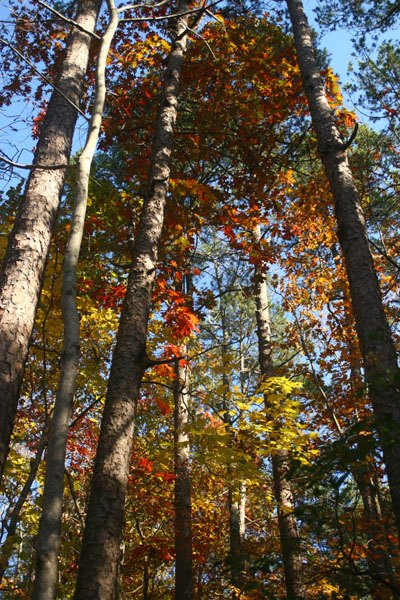 This autumn has proven to be one that I’ve rarely had the chance to take advantage of: a fairly good display of colors, peaking during clear weather, with no storms or even high winds to strip the leaves from the trees. So while this area has few vantages that provide the best display of colors – generally something that overlooks rolling hills with a wide variety of deciduous trees – I have to say I bagged a decent selection of images, from several different locales.
This autumn has proven to be one that I’ve rarely had the chance to take advantage of: a fairly good display of colors, peaking during clear weather, with no storms or even high winds to strip the leaves from the trees. So while this area has few vantages that provide the best display of colors – generally something that overlooks rolling hills with a wide variety of deciduous trees – I have to say I bagged a decent selection of images, from several different locales.
 I am probably a little too hooked on using reflections and floating leaves, but hey, I like ’em. The idea of ‘peak’ colors is a little misleading; there is often a point where you can see the maximum amount of colors, but usually a number of species have hit their most colorful much earlier, while most others are still green, and these early bloomers greet ‘peak’ with empty branches. Sometimes this can be worked into the composition, sometimes it’s a patch of distracting, somewhat anachronistic bare trunks. For this one, I decided to use those branches as a backdrop for the leaves passing by, and the blue sky and yellow leaves set off one another nicely.
I am probably a little too hooked on using reflections and floating leaves, but hey, I like ’em. The idea of ‘peak’ colors is a little misleading; there is often a point where you can see the maximum amount of colors, but usually a number of species have hit their most colorful much earlier, while most others are still green, and these early bloomers greet ‘peak’ with empty branches. Sometimes this can be worked into the composition, sometimes it’s a patch of distracting, somewhat anachronistic bare trunks. For this one, I decided to use those branches as a backdrop for the leaves passing by, and the blue sky and yellow leaves set off one another nicely.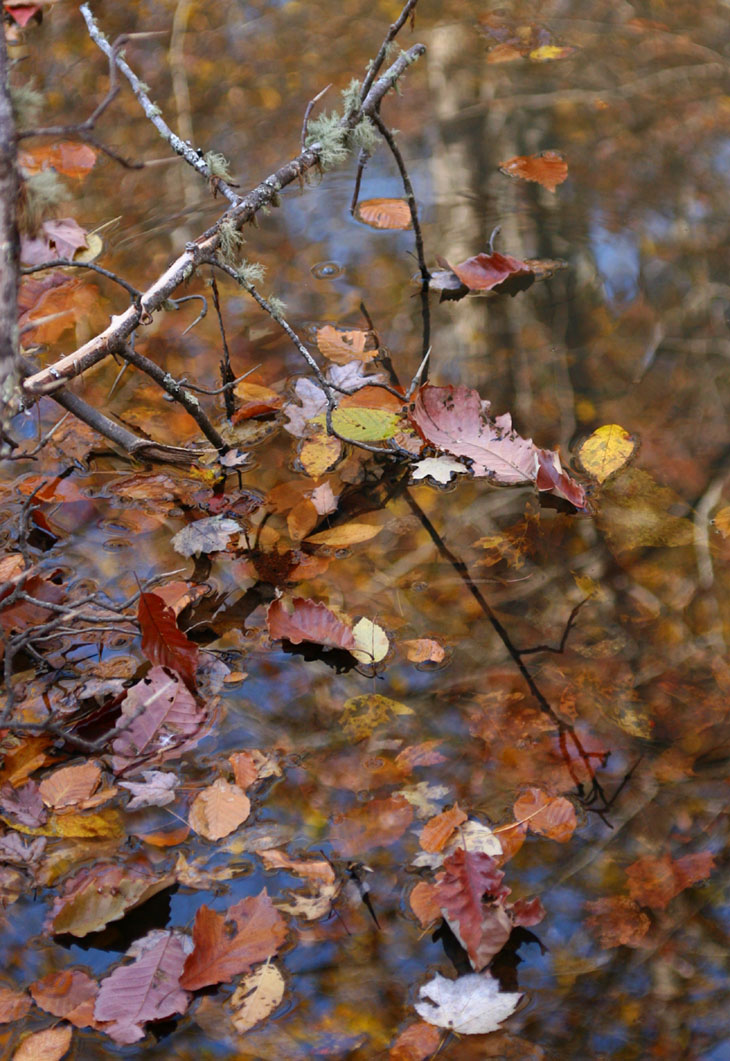
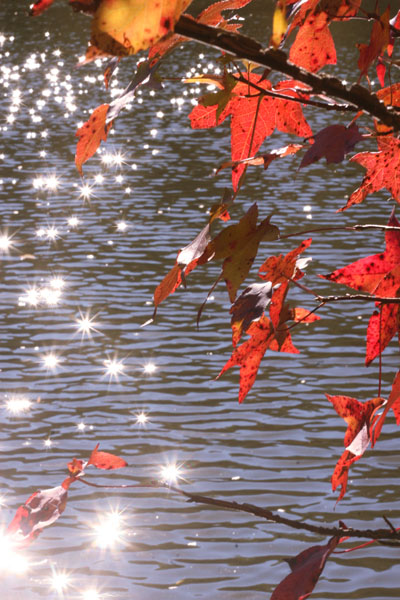 So while I’m on the subject of reflections, we’ll look at another variation. The reflection of sunlight near the horizon off of rippling water or wet sand is called a glittertrail, and naturally is a useful element in itself. A very small aperture (in this case f22) turns these little spots of intense light into starbursts. I liked the color intensity of the backlit leaves, but didn’t know what else to do with them until I shifted too far to the side and started blinding myself with the glittertrail – aha! I really wanted a stronger, more prominent leaf for this composition, but the wind was pretty stiff this day and whipping the leaves madly (which also contributed to the well-spaced sparkles off the water,) so this is what I got. If it motivates you to try a variation, fantastic – remember me when the royalties come rolling in.
So while I’m on the subject of reflections, we’ll look at another variation. The reflection of sunlight near the horizon off of rippling water or wet sand is called a glittertrail, and naturally is a useful element in itself. A very small aperture (in this case f22) turns these little spots of intense light into starbursts. I liked the color intensity of the backlit leaves, but didn’t know what else to do with them until I shifted too far to the side and started blinding myself with the glittertrail – aha! I really wanted a stronger, more prominent leaf for this composition, but the wind was pretty stiff this day and whipping the leaves madly (which also contributed to the well-spaced sparkles off the water,) so this is what I got. If it motivates you to try a variation, fantastic – remember me when the royalties come rolling in.
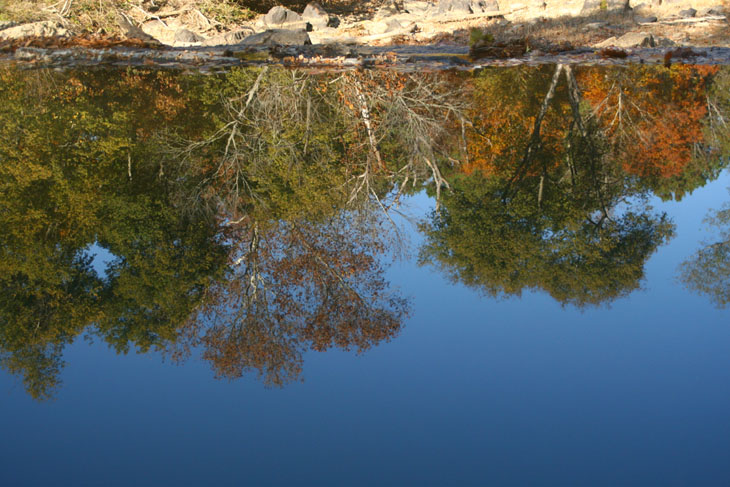
 That’s so much better, right? Uh, no? This is actually looking down from a small hill at the reflection of the trees and sky in the inordinately still water above a spillway, the lip of which forms the edge between the trees and the bright rocks, which are on the riverbed well beyond the reflection and the spillway itself. Here’s a variation that makes it a little more obvious, though I imagine it might still seem a bit mind-bending until the perspective falls into place.
That’s so much better, right? Uh, no? This is actually looking down from a small hill at the reflection of the trees and sky in the inordinately still water above a spillway, the lip of which forms the edge between the trees and the bright rocks, which are on the riverbed well beyond the reflection and the spillway itself. Here’s a variation that makes it a little more obvious, though I imagine it might still seem a bit mind-bending until the perspective falls into place. So while out shooting during yesterday’s session, a large leaf dropped and perched atop my camera, and the indefatigable Al Bugg (yes, same first name, and yes, we’re often not sure which one of us we’re addressing in conversation) captured the portrait. That’s the ‘heavy kit’ I’m wearing, everything on belt packs with supportive suspenders – ready for just about anything. Go ahead and laugh.
So while out shooting during yesterday’s session, a large leaf dropped and perched atop my camera, and the indefatigable Al Bugg (yes, same first name, and yes, we’re often not sure which one of us we’re addressing in conversation) captured the portrait. That’s the ‘heavy kit’ I’m wearing, everything on belt packs with supportive suspenders – ready for just about anything. Go ahead and laugh.

 So, okay. I went out yesterday to check out the nature trails behind
So, okay. I went out yesterday to check out the nature trails behind 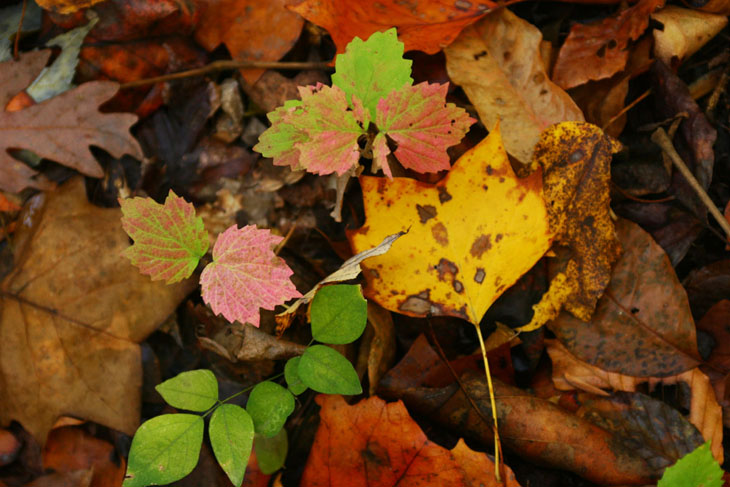
 The sky was perfectly clear after the previous day’s rain storms, and the low angle of the wintering sun produced not only very high contrast conditions, but a significant amount of glare when facing anywhere remotely eastward, so some compositions, that might have been quite compelling in other conditions, were simply out of the question. There are ways, however, of using such light angles. Magnolia trees tend to lose their leaves early, and the bigleaf magnolia (Magnolia macrophylla) wasn’t far from dropping these like so many of the others already littering the ground beneath, so within a few days this opportunity would have been gone. Some trees are already bare and many in the process of changing colors, while quite a few, as seen in the steps shot, are still quite green.
The sky was perfectly clear after the previous day’s rain storms, and the low angle of the wintering sun produced not only very high contrast conditions, but a significant amount of glare when facing anywhere remotely eastward, so some compositions, that might have been quite compelling in other conditions, were simply out of the question. There are ways, however, of using such light angles. Magnolia trees tend to lose their leaves early, and the bigleaf magnolia (Magnolia macrophylla) wasn’t far from dropping these like so many of the others already littering the ground beneath, so within a few days this opportunity would have been gone. Some trees are already bare and many in the process of changing colors, while quite a few, as seen in the steps shot, are still quite green.
 Background is an important factor, and one that is amazingly easy to change at this time of year. A very small adjustment of shooting position – left or right, higher or lower – can drastically affect just what is going to appear in the background, and the ability to enhance your subject can make the difference between a basic shot and an interesting one. Is there a color or shape that will work with the subject better? Is there something clashing that needs to be eliminated? Thinking in terms of the entire frame, and being aware of what’s beyond the subject, can help a lot. While this one was relatively simple to achieve, I’ve gone flat on the ground or stood on fences and rocks to change the appearance of the background (and affect the light angle as well) – minor efforts to create major differences. And yes, this has often meant getting dirty, damp, or worse, and sometimes I bring along kneepads and a ground cloth (a small section of waterproof tarp) when I expect to be doing a lot of it, but I’m also not too concerned with how I look to others, or how uncomfortable I might be afterwards, if I get a shot that I like.
Background is an important factor, and one that is amazingly easy to change at this time of year. A very small adjustment of shooting position – left or right, higher or lower – can drastically affect just what is going to appear in the background, and the ability to enhance your subject can make the difference between a basic shot and an interesting one. Is there a color or shape that will work with the subject better? Is there something clashing that needs to be eliminated? Thinking in terms of the entire frame, and being aware of what’s beyond the subject, can help a lot. While this one was relatively simple to achieve, I’ve gone flat on the ground or stood on fences and rocks to change the appearance of the background (and affect the light angle as well) – minor efforts to create major differences. And yes, this has often meant getting dirty, damp, or worse, and sometimes I bring along kneepads and a ground cloth (a small section of waterproof tarp) when I expect to be doing a lot of it, but I’m also not too concerned with how I look to others, or how uncomfortable I might be afterwards, if I get a shot that I like.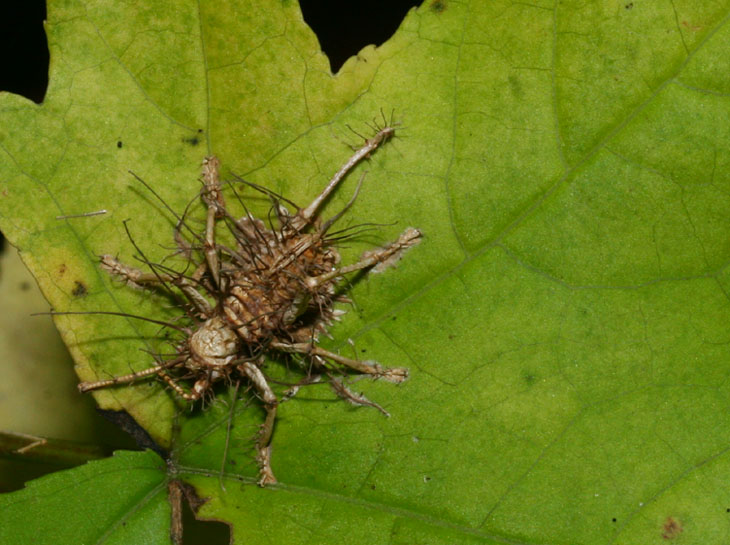
 I decided, since i was in the immediate vicinity, to hit the garden proper once more. North Carolina is one of the few states where predatory plants are native, so the botanical garden, dedicated to native species, features a variety of Venus flytraps, sundews, and pitcher plants. The pitcher plants always host some resident wasps, and I’m in the process of determining what these are and how they live. The reason being, I’ve seen more than a few pitcher plants that are plugged with grass or leaves, and some that feature a hole chewed into the trumpet well down the body. Pitcher plants have slippery insides, an attractive smell, and a pool of sticky nectar at the bottom that attracts the insects that will nourish the plant with their death, but it appears some arthropod has circumvented this trait for their own purposes, probably in protecting the larvae. Right now I’m just not sure if it’s actually the wasp species seen here, or of the wasp preys on the species that attacks the pitcher plant. So I’ll just leave this image here while I work on the details.
I decided, since i was in the immediate vicinity, to hit the garden proper once more. North Carolina is one of the few states where predatory plants are native, so the botanical garden, dedicated to native species, features a variety of Venus flytraps, sundews, and pitcher plants. The pitcher plants always host some resident wasps, and I’m in the process of determining what these are and how they live. The reason being, I’ve seen more than a few pitcher plants that are plugged with grass or leaves, and some that feature a hole chewed into the trumpet well down the body. Pitcher plants have slippery insides, an attractive smell, and a pool of sticky nectar at the bottom that attracts the insects that will nourish the plant with their death, but it appears some arthropod has circumvented this trait for their own purposes, probably in protecting the larvae. Right now I’m just not sure if it’s actually the wasp species seen here, or of the wasp preys on the species that attacks the pitcher plant. So I’ll just leave this image here while I work on the details.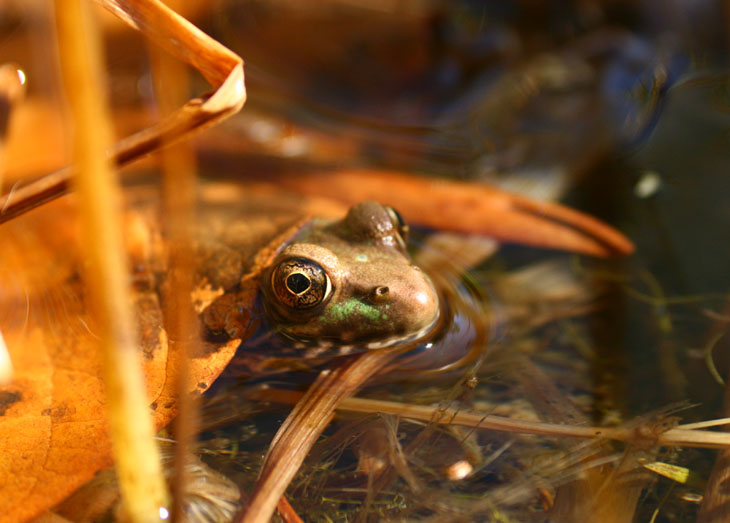
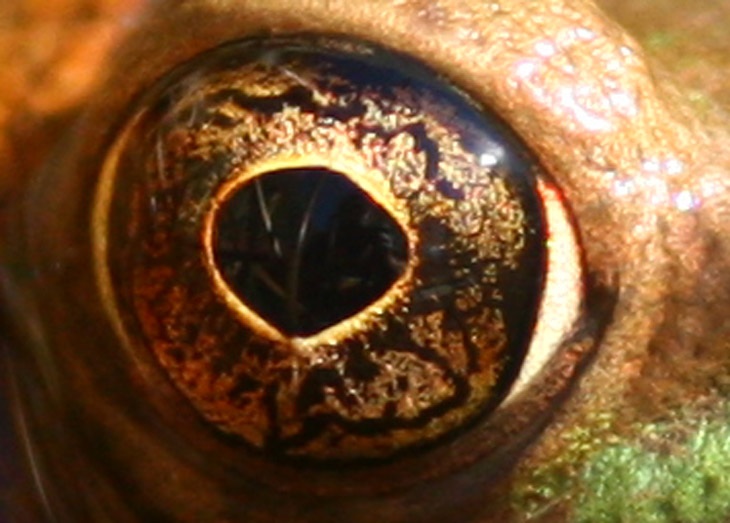
 I also got another image of the same flowering plant that appeared in that earlier post, though not the same blossoms of course. This time I was thoughtful enough to look for the identifying plaque, but there was none, so I still cannot tell you what species this actually is. But the light was at a more useful angle this time, so the interiors were better illuminated, meaning that one of the bumblebees had to burrow in quite deeply to stay in the shadows – that dark spot in the lower blossom is a bee, while the other scampered around on the outside of the petals, knowing there was nectar to be had but not terribly sure how to reach it. C’mon, their brains are the size of a booger, they have to screw up from time to time…
I also got another image of the same flowering plant that appeared in that earlier post, though not the same blossoms of course. This time I was thoughtful enough to look for the identifying plaque, but there was none, so I still cannot tell you what species this actually is. But the light was at a more useful angle this time, so the interiors were better illuminated, meaning that one of the bumblebees had to burrow in quite deeply to stay in the shadows – that dark spot in the lower blossom is a bee, while the other scampered around on the outside of the petals, knowing there was nectar to be had but not terribly sure how to reach it. C’mon, their brains are the size of a booger, they have to screw up from time to time…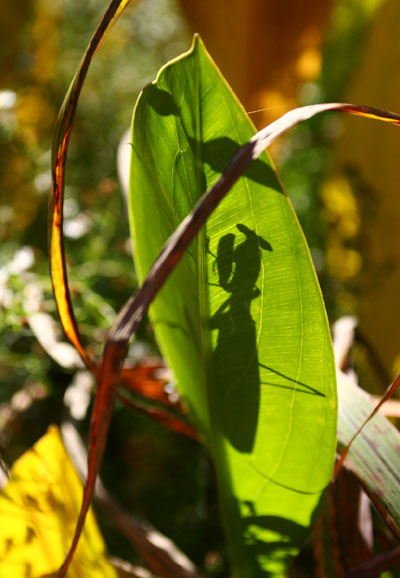 So when I spotted the shadow on the large leaf in passing, you know I was chuffed. Not an hour earlier I had been thinking that the mantids had been scarce in the garden that year, and I lost my opportunities for those shots at home back in July; it was very cooperative of this one to pose so distinctly in the center of the leaf, probably still warming herself after the crisp night. While my framing here makes it quite prominent, this was actually found in a crowded, complicated stand of various plants and was not obvious; I almost missed it entirely in passing. Interestingly, the light angle is not as it seems, as is indicated by by looking at the top right of the leaf, above the crossing brown frond; that thread sticking out up there is her antenna, the same one throwing the fine shadow across the leaf.
So when I spotted the shadow on the large leaf in passing, you know I was chuffed. Not an hour earlier I had been thinking that the mantids had been scarce in the garden that year, and I lost my opportunities for those shots at home back in July; it was very cooperative of this one to pose so distinctly in the center of the leaf, probably still warming herself after the crisp night. While my framing here makes it quite prominent, this was actually found in a crowded, complicated stand of various plants and was not obvious; I almost missed it entirely in passing. Interestingly, the light angle is not as it seems, as is indicated by by looking at the top right of the leaf, above the crossing brown frond; that thread sticking out up there is her antenna, the same one throwing the fine shadow across the leaf. No, I did not get multiple frames of the mantis shadow and neglect getting the mantis herself (I just had some space to fill up alongside.) This is, most likely, a Chinese mantis (Tenodera aridifolia sinensis,) the most common species around here, and the largest – this one is not quite as long as my hand, and I’m guessing female from the size and girth. Yes, she’s got some kind of injury to her right eye cluster, and in a less-than-ideal location too, since it quite possibly affects her depth-perception right up front where it’s most useful in nabbing prey. Yet she’s more than big enough, so either it’s recent or it didn’t have too detrimental an affect on her. Unless I miss my guess she’ll be producing an egg sac soon, which will overwinter and hatch out the young somewhere around
No, I did not get multiple frames of the mantis shadow and neglect getting the mantis herself (I just had some space to fill up alongside.) This is, most likely, a Chinese mantis (Tenodera aridifolia sinensis,) the most common species around here, and the largest – this one is not quite as long as my hand, and I’m guessing female from the size and girth. Yes, she’s got some kind of injury to her right eye cluster, and in a less-than-ideal location too, since it quite possibly affects her depth-perception right up front where it’s most useful in nabbing prey. Yet she’s more than big enough, so either it’s recent or it didn’t have too detrimental an affect on her. Unless I miss my guess she’ll be producing an egg sac soon, which will overwinter and hatch out the young somewhere around 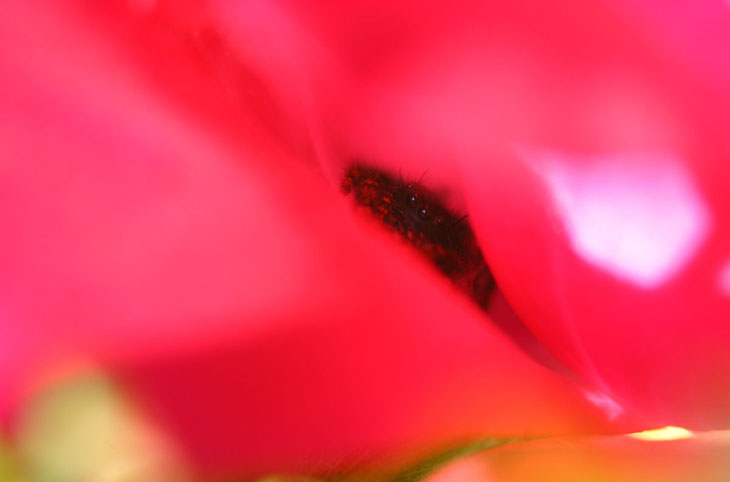
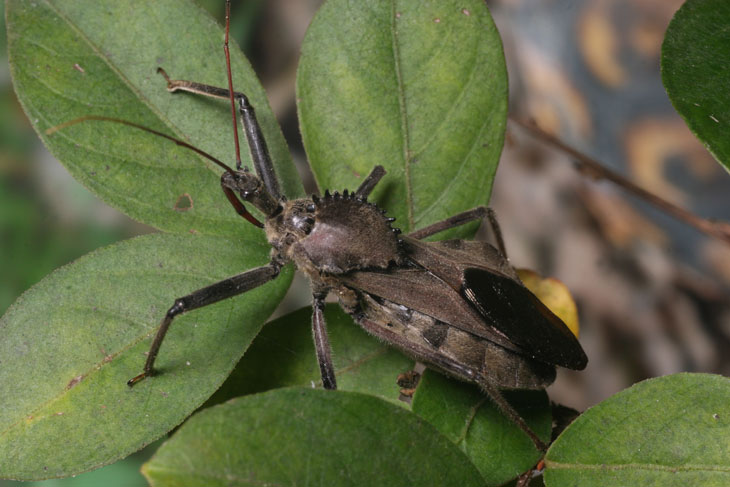



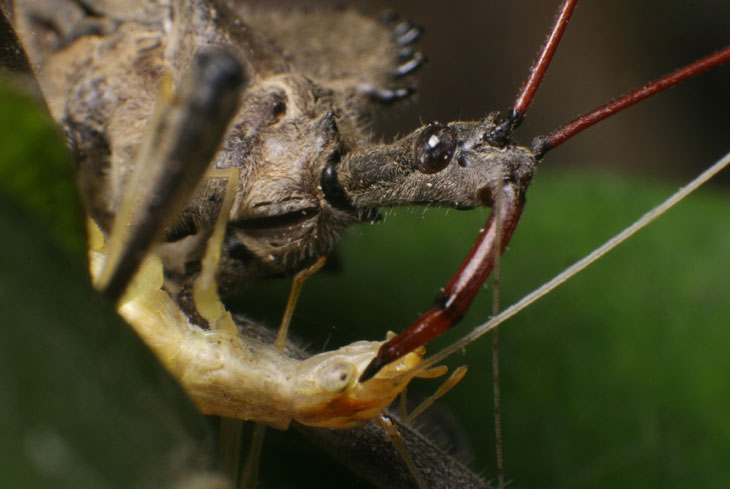
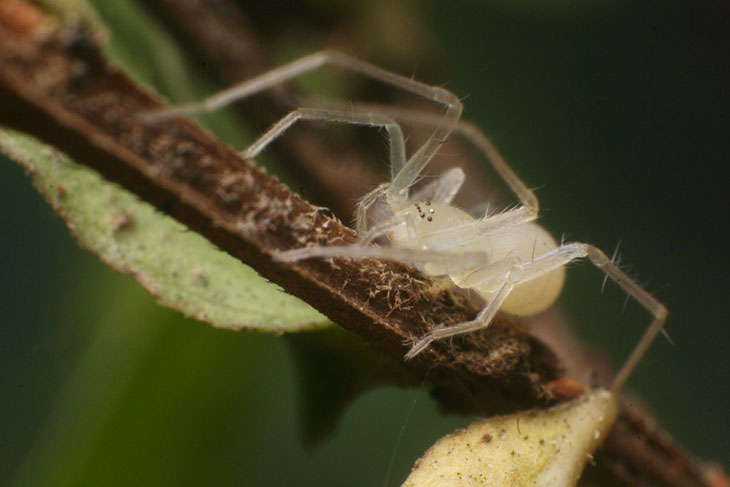
 Looking out the window the other day, I saw the curious spectacle of a harvestman spinning on a bit of pine bark dangling from a stray web strand – this is mildly notable in that harvestmen do not spin webs nor climb them, so I’m not actually sure how this one got there, and it didn’t seem to know what to do itself. Most people I’ve met seem to refer to these by the marvelously technical-sounding name of “daddy longlegs,” though that same nomenclature is applied to species of crane flies as well – “harvestman” is the more appropriate common name, but like all common names, it’s better to go with the scientific names for accuracy. In this case Opiliones is the overall Order, an arachnid but not a spider – and no, they’re not the most venomous arthropod in North America, they have no venom at all. Urban legends are ridiculously hard to get rid of. According to one source I found, it’s not even clear if they hunt or only scavenge, feeding on insects already dead. My own experience hasn’t contradicted the scavenge idea, and in fact I have photographed them carrying long-dead caterpillars. I have also only seen them feeding at night, so that’s the time to look if you’re interested yourself (what am I saying, “if” – of course you are.)
Looking out the window the other day, I saw the curious spectacle of a harvestman spinning on a bit of pine bark dangling from a stray web strand – this is mildly notable in that harvestmen do not spin webs nor climb them, so I’m not actually sure how this one got there, and it didn’t seem to know what to do itself. Most people I’ve met seem to refer to these by the marvelously technical-sounding name of “daddy longlegs,” though that same nomenclature is applied to species of crane flies as well – “harvestman” is the more appropriate common name, but like all common names, it’s better to go with the scientific names for accuracy. In this case Opiliones is the overall Order, an arachnid but not a spider – and no, they’re not the most venomous arthropod in North America, they have no venom at all. Urban legends are ridiculously hard to get rid of. According to one source I found, it’s not even clear if they hunt or only scavenge, feeding on insects already dead. My own experience hasn’t contradicted the scavenge idea, and in fact I have photographed them carrying long-dead caterpillars. I have also only seen them feeding at night, so that’s the time to look if you’re interested yourself (what am I saying, “if” – of course you are.)
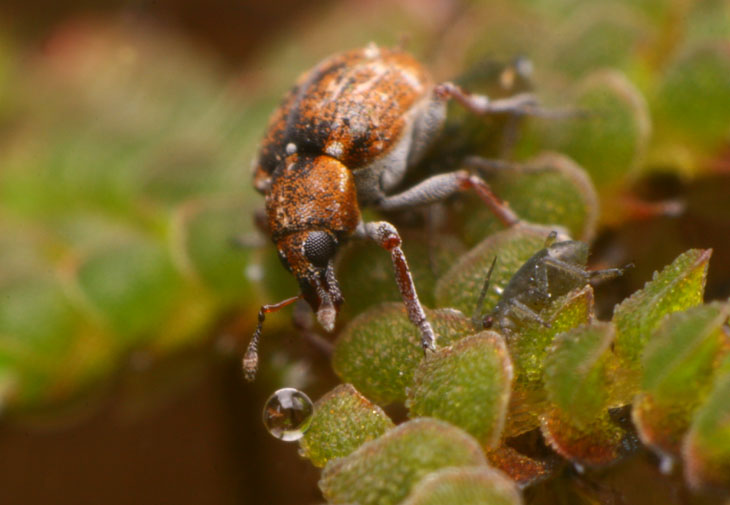
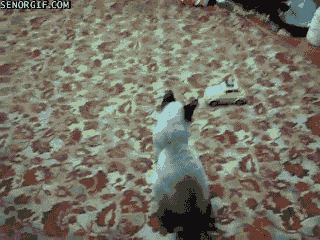 The other, as mentioned earlier, is the idea that the danger doesn’t really exist – there is a startle response, but not necessarily a fear one, just like jumping out at someone; this seems likely to involve two different portions of the brain, one that generates an immediate response, the other that says, “All right, just chill, you dope.” While you can certainly disguise yourself and hide in your friend’s house to chase them around with a fake knife for a minute or two, it seems highly unlikely that they’re going to laugh and enjoy the experience when you reveal it all to be a prank – there’s definitely a ‘too far’ element. Plus you’re going to get the shit kicked out of you. People who experience sustained fear may suffer the shakes afterward, or nausea, or even pass out; there seems to be no ‘release,’ no ‘high,’ and even the sense of relief is inadequate. It almost certainly has to be brief. This would seem to separate it from things like skydiving, and climbing very tall structures, so perhaps thrill riders and adrenaline junkies are two separate classes of behavior.
The other, as mentioned earlier, is the idea that the danger doesn’t really exist – there is a startle response, but not necessarily a fear one, just like jumping out at someone; this seems likely to involve two different portions of the brain, one that generates an immediate response, the other that says, “All right, just chill, you dope.” While you can certainly disguise yourself and hide in your friend’s house to chase them around with a fake knife for a minute or two, it seems highly unlikely that they’re going to laugh and enjoy the experience when you reveal it all to be a prank – there’s definitely a ‘too far’ element. Plus you’re going to get the shit kicked out of you. People who experience sustained fear may suffer the shakes afterward, or nausea, or even pass out; there seems to be no ‘release,’ no ‘high,’ and even the sense of relief is inadequate. It almost certainly has to be brief. This would seem to separate it from things like skydiving, and climbing very tall structures, so perhaps thrill riders and adrenaline junkies are two separate classes of behavior.


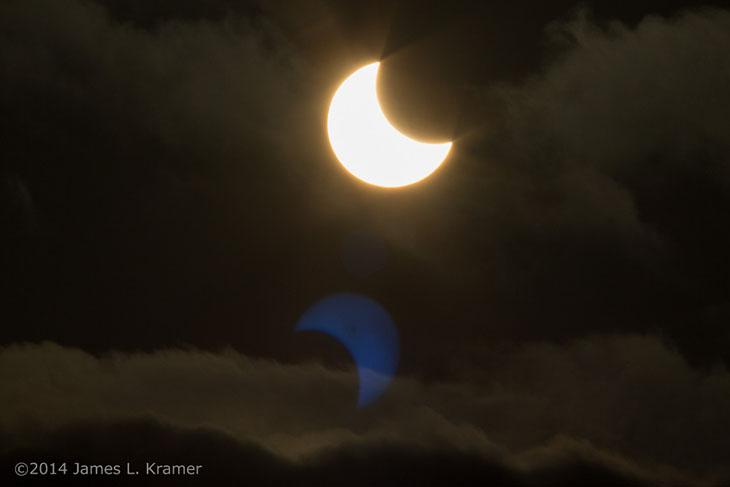

 I have a rather large, mostly speculative post coming soon, one that’s been in the works for a while now and has been something of a bear to finish, for a variety of reasons. But since I’m not going to finish it tonight either, I decided to span the gap with a handful of recent pics. Thus, this is filler, but quality filler, as the title implies. Or at least I think so. Hey, I could be doing some list of the ten most overused internet memes or something, so be grateful.
I have a rather large, mostly speculative post coming soon, one that’s been in the works for a while now and has been something of a bear to finish, for a variety of reasons. But since I’m not going to finish it tonight either, I decided to span the gap with a handful of recent pics. Thus, this is filler, but quality filler, as the title implies. Or at least I think so. Hey, I could be doing some list of the ten most overused internet memes or something, so be grateful.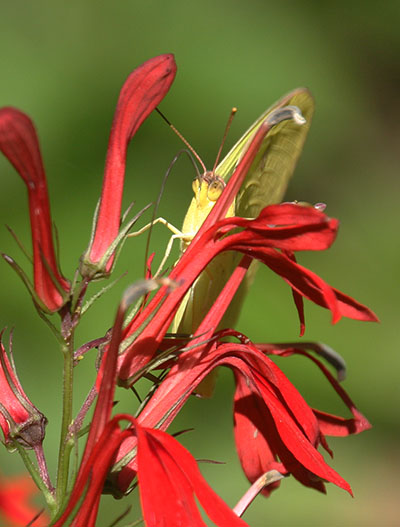 I’m a little more sure about the identity of both the butterfly and the plant in this image: cloudless sulphur buttefly (Phoebis sennae) on cardinal flower (Lobelia cardinalis.) While I have images that show the appearance of the butterfly much better, I liked this one for the angle and the visible feeding behavior.
I’m a little more sure about the identity of both the butterfly and the plant in this image: cloudless sulphur buttefly (Phoebis sennae) on cardinal flower (Lobelia cardinalis.) While I have images that show the appearance of the butterfly much better, I liked this one for the angle and the visible feeding behavior.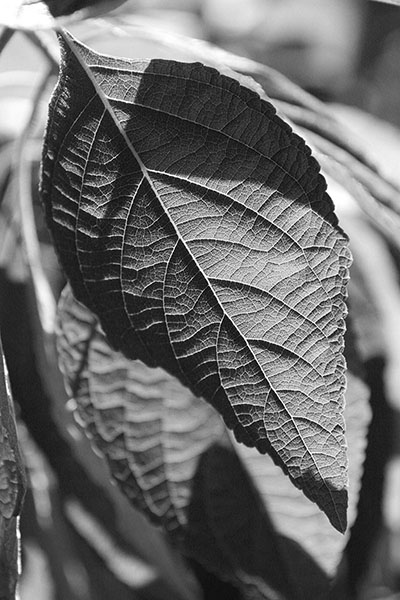 So what can you do with high contrast lighting? Well for one, you can produce some nice effects with backlighting, further enhanced with a minor editing trick. While the original version of this shot was in color, and a lovely brilliant green at that from the sun shining through the leaf, I tried a
So what can you do with high contrast lighting? Well for one, you can produce some nice effects with backlighting, further enhanced with a minor editing trick. While the original version of this shot was in color, and a lovely brilliant green at that from the sun shining through the leaf, I tried a 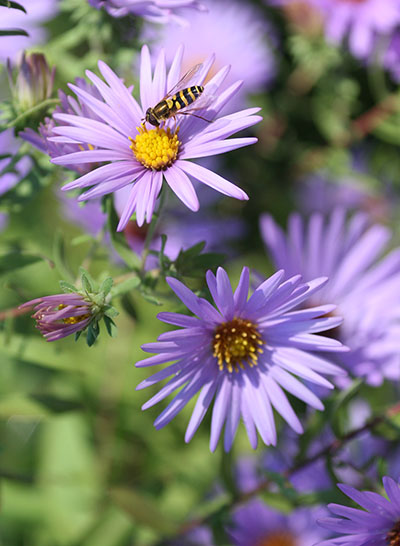 Another variety of aster, or perhaps the same one but having bloomed a little later so the centers are still vibrant yellow. Nothing much to say about this – just took advantage of the visiting hoverfly to provide a different point of focus. Had the hoverfly been on the lower blossom and thus in less-direct light, the effect would have been different, likely not as strong – something to consider while chasing pollinators on flowers. Pick a good position with the sun giving the best angle of light, and watch for the subjects that leap out at you because of the way the light plays across them.
Another variety of aster, or perhaps the same one but having bloomed a little later so the centers are still vibrant yellow. Nothing much to say about this – just took advantage of the visiting hoverfly to provide a different point of focus. Had the hoverfly been on the lower blossom and thus in less-direct light, the effect would have been different, likely not as strong – something to consider while chasing pollinators on flowers. Pick a good position with the sun giving the best angle of light, and watch for the subjects that leap out at you because of the way the light plays across them.  We leave the botanical garden for a moment (or a single image – however you want to measure the time) to visit a place called the
We leave the botanical garden for a moment (or a single image – however you want to measure the time) to visit a place called the 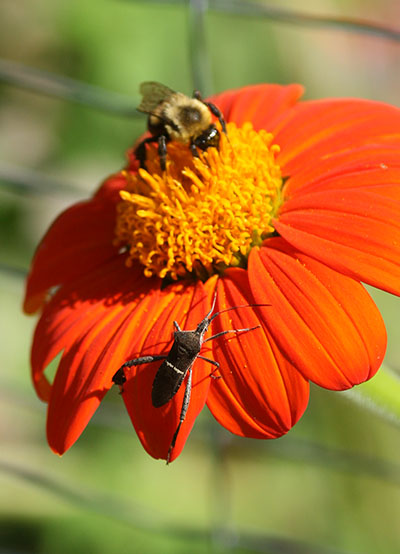 Okay, I tried finding out what flower this is, and had no luck whatsoever. The foreground insect is an Eastern leaf-footed bug (Leptoglossus phyllopus,) but there are too few details visible on the bumblebee to pin it down any further than that. The leaf-footed bug demonstrates why light angle and contrast can make such a difference, because it’s on the fine edge of throwing its own back completely into shadow – meanwhile, some of the flower petals came out with wonderful shaping (bottom center) while others almost lost all detail from the light (right.) So, now that I got you to look carefully at the image, did you notice the fence in the background? Because I always do, and fret about it, but I’m curious to know who else actually catches these, or whether I should stop worrying so much about them.
Okay, I tried finding out what flower this is, and had no luck whatsoever. The foreground insect is an Eastern leaf-footed bug (Leptoglossus phyllopus,) but there are too few details visible on the bumblebee to pin it down any further than that. The leaf-footed bug demonstrates why light angle and contrast can make such a difference, because it’s on the fine edge of throwing its own back completely into shadow – meanwhile, some of the flower petals came out with wonderful shaping (bottom center) while others almost lost all detail from the light (right.) So, now that I got you to look carefully at the image, did you notice the fence in the background? Because I always do, and fret about it, but I’m curious to know who else actually catches these, or whether I should stop worrying so much about them. 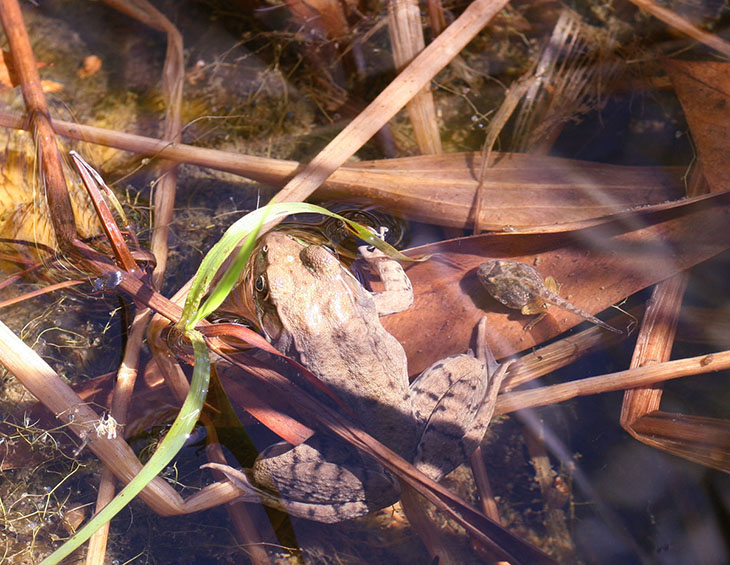
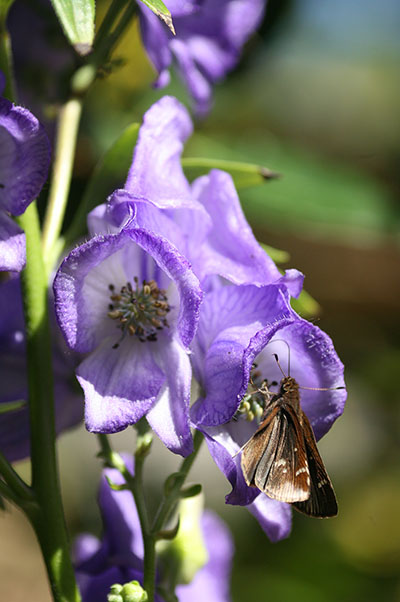 One last shot of purple, just to give your monitor a workout. I have no idea what this flower is either, though it’s very pleasant-looking, but the butterfly is some variety of skipper (Hesperiidae,) possibly a clouded skipper (Lerema accius.) It was intent on getting the most out of that blossom, so I was able to shoot a series of images while steadily leaning in closer.
One last shot of purple, just to give your monitor a workout. I have no idea what this flower is either, though it’s very pleasant-looking, but the butterfly is some variety of skipper (Hesperiidae,) possibly a clouded skipper (Lerema accius.) It was intent on getting the most out of that blossom, so I was able to shoot a series of images while steadily leaning in closer.